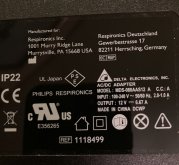I am kayaking/rafting the Grand Canyon in January, and need electricity to power my CPAP breathing machine overnight. I have a Jackery Explorer 500, considering upgrading it to the Explorer 1000, and a cheap 120 watt foldable panel.
I would like to find a way to have the panel deployed on a raft while we are paddling downriver, as we will spend the bulk of the daylight hours paddling. However, the battery box is not waterproof. The solar panel claims to be waterproof except the connection box; my plan there is to just slather the whole thing in silicon sealant and just block off the ports I’m not using. For the battery box, my plan is to put it inside a waterproof box such as a large Pelican case, and drill a hole through the case to run the wire, obviously sealing around the wire. That leaves the pluggable connection between the box and the panel as the last weak spot for water to get in, but I think that will be fine as long as it’s not submersed a long time.
Has anyone else done something like this before? I can’t imagine nobody has, but I can’t find any info online about a similar project.
I would like to find a way to have the panel deployed on a raft while we are paddling downriver, as we will spend the bulk of the daylight hours paddling. However, the battery box is not waterproof. The solar panel claims to be waterproof except the connection box; my plan there is to just slather the whole thing in silicon sealant and just block off the ports I’m not using. For the battery box, my plan is to put it inside a waterproof box such as a large Pelican case, and drill a hole through the case to run the wire, obviously sealing around the wire. That leaves the pluggable connection between the box and the panel as the last weak spot for water to get in, but I think that will be fine as long as it’s not submersed a long time.
Has anyone else done something like this before? I can’t imagine nobody has, but I can’t find any info online about a similar project.




